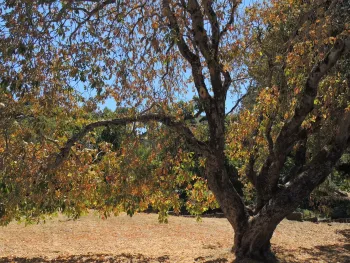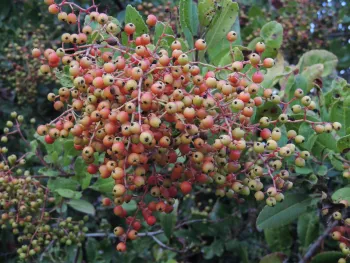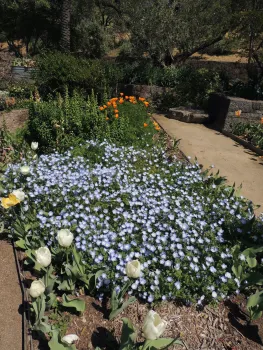
There are many books devoted to California natives. Because our state is large and has many different habitats, from the sea to the highest mountains in the Sierras, from the cool northern part of the state to the deserts of Southern California, our plant life reflects this incredible diversity. Our state is part of the California Floristic Province, which goes from southwestern Oregon to Baja California. It is also known as a biodiversity hotspot. There are over 3000 vascular plants endemic to this region.
Many of these plants are so rare that some botanists never see them despite spending time in the field. Many natives make great garden specimens, adapted to do well in our gardens.

Trees that do well without overwhelming a small garden include the Western Redbud (Cercis occidentalis), which does indeed have red buds that open to bright purple blossoms followed by apple green foliage and the possibility in colder areas of fall red or yellow foliage. It can also be grown as an understory tree. The Californica Buckeye (Aesculus californica) will drop its leaves as early as summer in response to drought, but this reveals its lovely silvery branching. Its spring flowers can be spectacularly huge, though its pollen is poisonous to European honeybees. The large fruits are a glossy mahogany color and are poisonous to humans and many mammals. Toyon (Heteromeles arbutifolia), which still goes by its Ohlone name, is one of the very best habitat plants, producing bright red berries (or gold in ‘Davis Gold’). It’s the namesake for Hollywood and is best grown as a multi-trunked shrub that will eventually grow into a small tree. Along with its bounty of berries it’s also attractive to bugs which provide food for wrens and other bug eaters.
A few shrubs you may not have thought of include Carpenteria californica or bush anemone, which flowers for a couple of months in the spring with masses of beautiful white flowers with fluffy yellow stamens. It should be cut back after blooming. When Spicebush (Calycanthus occidentalis) blooms, the odor of crushed foliage is said to be redolent of a wine cellar…the solitary red/maroon blooms last a couple of months. Native to lakes and streams, Spicebush will do best with regular water. Fairy duster (Calliamdra eriophylla) is a small shrub with “flowers” that are actually stamens, which present as pink to dark pink “flowers.” It can be used for erosion control since it spreads by rhizomes. It’s a desert plant that will do well in warm coastal areas.

There are about 40 Dudleyas, succulents endemic to California, but only a handful are cultivated by the plant trade. Many are protected by law because they’re so rare. Dudleyas come in two forms: branching, which develops multiple rosettes, and unbranching, which develops a solitary rosette. Britton dudleya (Dudleya brittonii) has a single rosette and a chalky white appearance and will grow to about a foot across. Plant at an angle to keep water from accumulating in the crown which can cause rot.
Don’t forget some wildflowers such as Baby Blue Eyes (Nemophilia menziesii), Farewell to Spring (Clarkia amoena), Milkweed (Asclepias fascicularis), Asters (Aster chilensis), California Fuchsia (Epilobium or Zauschneria), and our most wonderful wildflower the California poppy (Eschecholzia californica), which make me smile every time I see them.
By Diane Lynch, April 19, 2025

